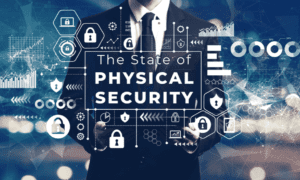Technology has become a core part of modern living, touching nearly every aspect of our daily routines. From smart devices that monitor health to automated systems that control home safety, reliance on technology has grown immensely. While these tools offer convenience, they also introduce unique risks that people may not anticipate. A simple software glitch, device malfunction, or unexpected failure can create situations that result in accidents or injuries, especially when human interaction is involved.
Even with the most advanced systems, accidents can occur in ways that seem unpredictable. Smart homes, autonomous vehicles, and wearable devices are designed to improve safety, but failures in design, maintenance, or user error can turn innovation into a source of risk. These moments highlight how technology, while transformative, carries responsibilities that extend beyond functionality. Awareness and precaution are essential in minimizing potential harm in increasingly connected environments.
The broader implication of technology-related risks extends beyond individual users to communities and workplaces. Organizations implementing automated systems, AI tools, or networked devices must consider how failures affect staff, clients, and infrastructure. In many cases, a single malfunction can cascade into multiple issues that impact productivity, health, and financial stability. Being aware of these wider effects helps individuals and companies prioritize safety and implement measures that prevent small problems from escalating.
Personal injury in a technological world
According to one law firm, personal injuries related to technology are more common than many realize. Whether it is a fall caused by a malfunctioning robotic vacuum, burns from overheating devices, or car accidents involving partially automated systems, technology introduces new types of hazards. Each injury not only affects physical health but can also disrupt professional and personal life, creating financial and emotional strain.
The legal implications of tech-related injuries are also evolving. Determining liability can be complex, involving manufacturers, software developers, service providers, and users. Victims may face challenges in proving negligence or defect, making documentation and expert consultation critical. As technology continues to advance, personal injury cases increasingly require specialized knowledge to understand the interplay between human behavior and machine performance.
In addition to immediate injury, technology-related incidents often create long-term physical and emotional challenges. Pain from accidents can limit mobility and affect mental well-being, while unexpected medical expenses place additional stress on families. Professionals may need to take time off work or adjust schedules to accommodate recovery. Recognizing these extended consequences emphasizes the importance of preventative measures, accurate reporting, and thoughtful response after an incident.
Extending the conversation on personal injury
As mentioned by a law firm, in addition to immediate physical harm, technology-related accidents often reveal longer-term consequences. Injuries that initially seem minor can worsen if follow-up care is delayed or mismanaged. Repetitive strain from poorly designed devices, ergonomic issues from constant tech use, and accidents resulting from faulty software can all compound over time. Families and caregivers frequently find themselves adapting to new responsibilities while supporting recovery.
Insurance and liability coverage for technology-related accidents can be confusing. Policies may not fully cover the nuances of incidents involving emerging devices or software failures. Individuals and families must be vigilant in documenting incidents and understanding their rights. Combining proactive safety measures with knowledge of available legal protections helps mitigate the impact of personal injury in a world increasingly shaped by technological innovation.
Another concern is the intersection of technology with workplace obligations. Employees using company-provided devices or software may face injury while performing tasks, raising questions about employer responsibility. Injuries can affect productivity and trigger legal claims, especially when ergonomic design or system reliability is at fault. A careful review of workplace safety protocols and insurance coverage ensures that risks are managed comprehensively and that affected individuals receive appropriate support and compensation.
Liability and accountability in tech
As technology continues to integrate into daily life, questions of accountability become more pronounced. When accidents occur, identifying the responsible party is often complicated. A malfunctioning device could result from a design flaw, manufacturing defect, or improper user setup. Each scenario carries different legal and financial implications, and resolving disputes can require expert analysis and negotiation.
Companies developing technological products are increasingly expected to anticipate potential hazards and provide clear safety guidelines. Users must also adhere to instructions and maintain devices properly. Establishing accountability requires collaboration between manufacturers, service providers, and consumers. Transparency and careful documentation during incidents are key to ensuring fair outcomes for everyone involved.
Accountability also extends to regulatory oversight and industry standards. Technology companies are subject to evolving regulations intended to protect users, and failure to comply can have legal and financial consequences. Organizations must stay current with safety standards, conduct routine testing, and implement monitoring systems to detect potential hazards early. These actions reduce the likelihood of accidents and reinforce trust between consumers and providers, creating a safer environment for technology adoption.
Preparing for risks in everyday tech
Preventing accidents begins with awareness and cautious interaction with technology. Conducting regular maintenance, following safety recommendations, and staying informed about updates or recalls are crucial steps in reducing potential hazards. Small precautions, such as securing cords, monitoring device performance, and evaluating automated systems regularly, can prevent many injuries before they occur.
Education and training are equally important. Families and workplaces benefit when users understand both capabilities and limitations of technology. Clear communication about proper use, potential risks, and emergency responses strengthens resilience against accidents. Proactive engagement with technology ensures that it enhances life without becoming a source of harm or unexpected liability.
Preparation also includes integrating safety features and protocols into daily routines. For example, monitoring software alerts, installing protective equipment, and creating contingency plans for device failures can prevent minor issues from escalating. Regular assessments of technology environments help identify overlooked risks, ensuring that proactive measures address real-world scenarios and reduce exposure to injury or liability.
Balancing innovation with safety
As technology evolves, it offers tremendous opportunities to improve health, productivity, and daily living. At the same time, the potential for accidents and personal injury underscores the need for careful attention and precaution. Maintaining safety requires a combination of awareness, responsible use, and structured guidance for handling incidents when they occur.
Focusing on both safety and innovation allows individuals and families to enjoy the benefits of technology while minimizing risks. Keeping records, following safety protocols, and consulting professionals when incidents occur create a framework for resilience. By balancing enthusiasm for new tools with a realistic understanding of hazards, people can engage confidently with technology while protecting themselves and those around them.
Long-term resilience also depends on ongoing reflection and improvement. Monitoring trends in device performance, learning from previous incidents, and incorporating feedback into safety practices ensures that both users and organizations remain prepared. A culture that values safety alongside innovation fosters responsible adoption of new technologies, allowing individuals to harness the benefits of innovation while minimizing exposure to harm and personal injury.





























